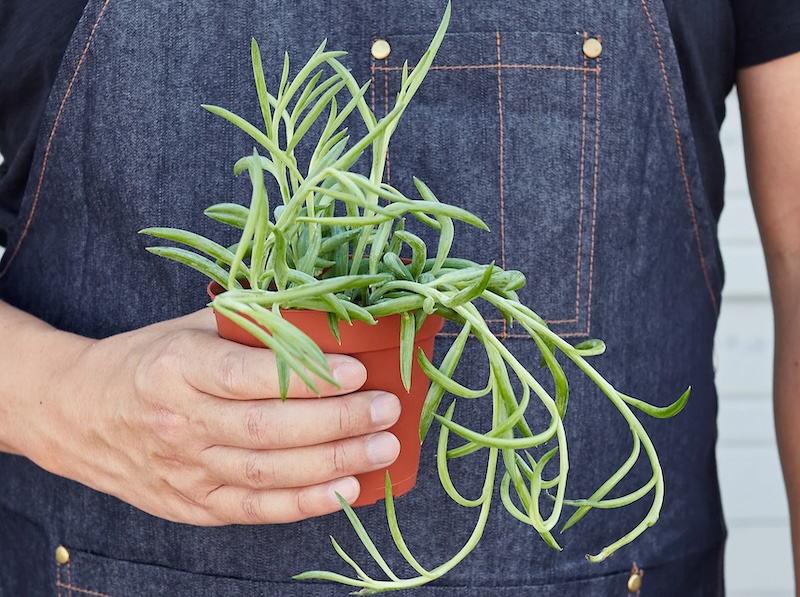Senecio is only hardy in USDA zones 9-12, but it can be moved outdoors during the summer months in zones 3-8. Moving the plants outdoors gives them a boost in sunlight and better air circulation. The absolute brightest spot indoors is still many lumens less than a shady location outdoors. The plants will also benefit from the warmer temperatures and more stable humidity levels outdoors than inside a fully air-conditioned house.

When To Put Senecio Outside
When the days lengthen and the nighttime temperatures are reliably over 50 degrees F, you can start acclimating your plants to outdoor conditions. The process of hardening off your houseplants will take a week or more and helps to reduce the stress on the plant. Senecios may be able to tolerate temperatures down to 45 F for a night or two, but they thrive in temperatures around 60-75 F. On the flip side, senecios struggle in long stretches of temperatures above 90 degrees F; plants may need to be placed in a shadier location or brought indoors until the heat wave passes.
When To Bring Senecio Indoors
Houseplants should be brought back indoors well before nighttime temperatures are in the lower 50s. To prepare your senecio for life indoors, move it to a sheltered location where it can be monitored for a week. Look for signs of insect damage and diseased foliage and treat as necessary. Quarantining the plant during this week ensures that no pests or diseases make their way indoors where they can easily spread over the winter months.
The lower humidity and light levels indoors can cause stress to the plants. Senecio will show this stress by developing yellow leaves or suddenly dropping seemingly healthy leaves. Water the plants as usual, being careful to not overwater, and soon the shock of moving indoors will pass.

Caring For Senecio Outdoors
Outdoors, senecio will be happiest in what seems like lower light levels to our eyes. Find a position in partial shade, such as under a pergola or arbor. The dappled sunlight will encourage vigorous growth without risking leaf scorch or bleaching. Keep your plant in a sheltered location, out of the path of strong winds and summer storms. Hail and heavy winds can seriously damage senecios with long strings of foliage. If any long stems are broken off, they can be easily replanted as cuttings.
Ensure senecio’s pot has excellent drainage by placing it on bricks or pot feet to allow for space between the pot and the patio or deck. Plastic pots often hold moisture longer than terra cotta pots, increasing the risk of overwatering.
Slugs and snails are typically the only pests of any real consequence for senecio, especially for potted plants near the ground. Using traps or a wildlife-friendly bait such as Sluggo® will help keep damage to a minimum.
 |
Author Robbin Small - Published 12-21-2023 |
